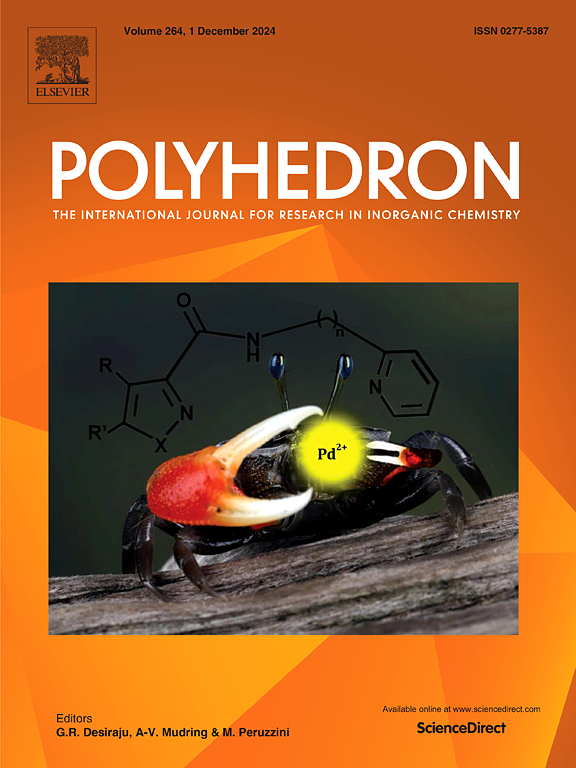f-Element complexes with benzyl and cyclohexyl substituted trihydroborates
IF 2.4
3区 化学
Q2 CHEMISTRY, INORGANIC & NUCLEAR
引用次数: 0
Abstract
Actinide complexes containing the simplest borohydrides (BH4)1− and (MeBH3)1− can exhibit remarkably highly volatility, which creates unique hazards and handling challenges, especially when making measurements on solid samples under vacuum. Here we describe efforts to prepare new actinide borohydride complexes with attenuated volatility by adding bulkier benzyl (Bn) and cyclohexyl (Cy) substituents to boron. Reactions of ThCl4, UI3(thf)4, and NdI3 with the mixed alkali metal salt Li/K(BnBH3)(thf)n yielded Th(BnBH3)4(thf)2, U(BnBH3)4(thf)2, and K[Nd(BnBH3)4], respectively. Notable amongst these, the reaction with UI3(thf)4 proceeds via oxidation of U(III) to U(IV) despite the presence of reducing borohydride ligands. Similarly, reactions of the same metal halides with four equivalents of Li(CyBH3)(Et2O)n yielded Th(CyBH3)4, U(CyBH3)4(thf)2, and [Li(Et2O)3][Nd(CyBH3)4]. Single crystal X-ray diffraction studies of the M(BnBH3)4(thf)2 complexes with M = Th and U confirmed their formulations. The complexes have approximate D2d point group symmetry and adopt bicapped hexagonal antiprismatic coordination geometries with axial thf ligands and κ3-BnBH3 ligands bound in the equatorial plane. K[Nd(BnBH3)4] and [Li(Et2O)3][Nd(CyBH3)4], which were prepared for comparison to U(III) complexes that were unsuccessfully targeted, were also structurally characterized to reveal complex anions with tetrahedral arrangements of trihydroborate ligands bound to Nd(III). Crystals obtained for Th(CyBH3)4 and U(CyBH3)4(thf)2 were not suitable for XRD studies, but 1H and 11B NMR spectra were consistent with their formulations. Collectively, these complexes represent rare examples of structurally characterized f-element trihydroborate complexes with carbon substituents other than methyl.

求助全文
约1分钟内获得全文
求助全文
来源期刊

Polyhedron
化学-晶体学
CiteScore
4.90
自引率
7.70%
发文量
515
审稿时长
2 months
期刊介绍:
Polyhedron publishes original, fundamental, experimental and theoretical work of the highest quality in all the major areas of inorganic chemistry. This includes synthetic chemistry, coordination chemistry, organometallic chemistry, bioinorganic chemistry, and solid-state and materials chemistry.
Papers should be significant pieces of work, and all new compounds must be appropriately characterized. The inclusion of single-crystal X-ray structural data is strongly encouraged, but papers reporting only the X-ray structure determination of a single compound will usually not be considered. Papers on solid-state or materials chemistry will be expected to have a significant molecular chemistry component (such as the synthesis and characterization of the molecular precursors and/or a systematic study of the use of different precursors or reaction conditions) or demonstrate a cutting-edge application (for example inorganic materials for energy applications). Papers dealing only with stability constants are not considered.
 求助内容:
求助内容: 应助结果提醒方式:
应助结果提醒方式:


